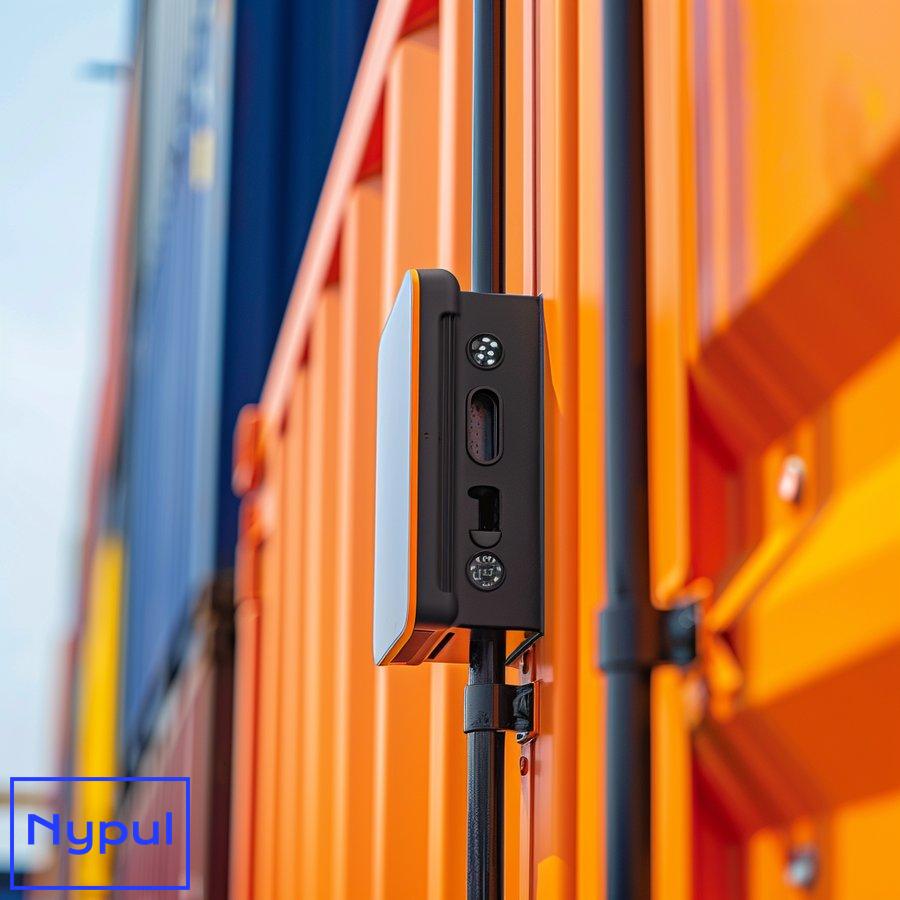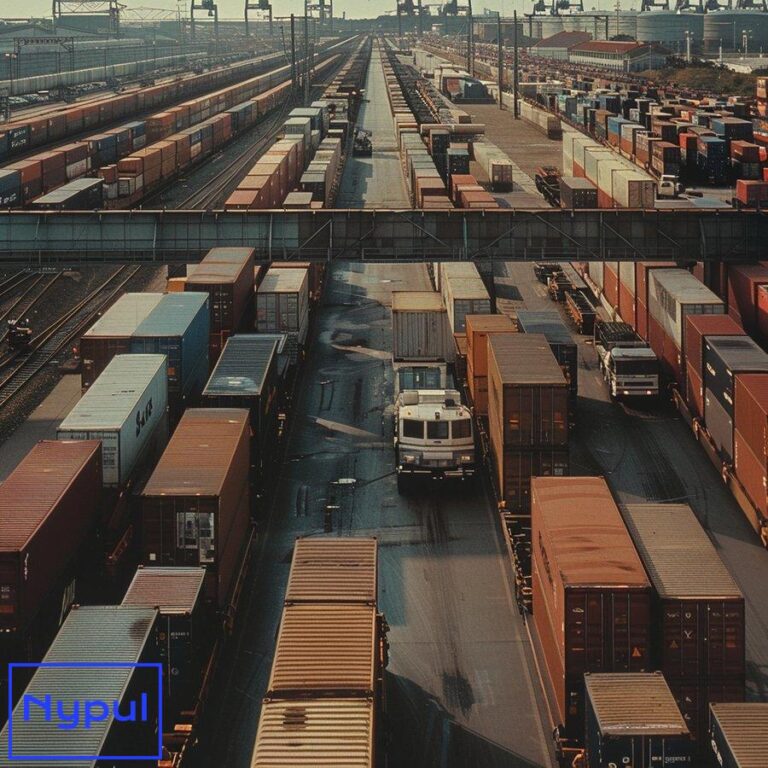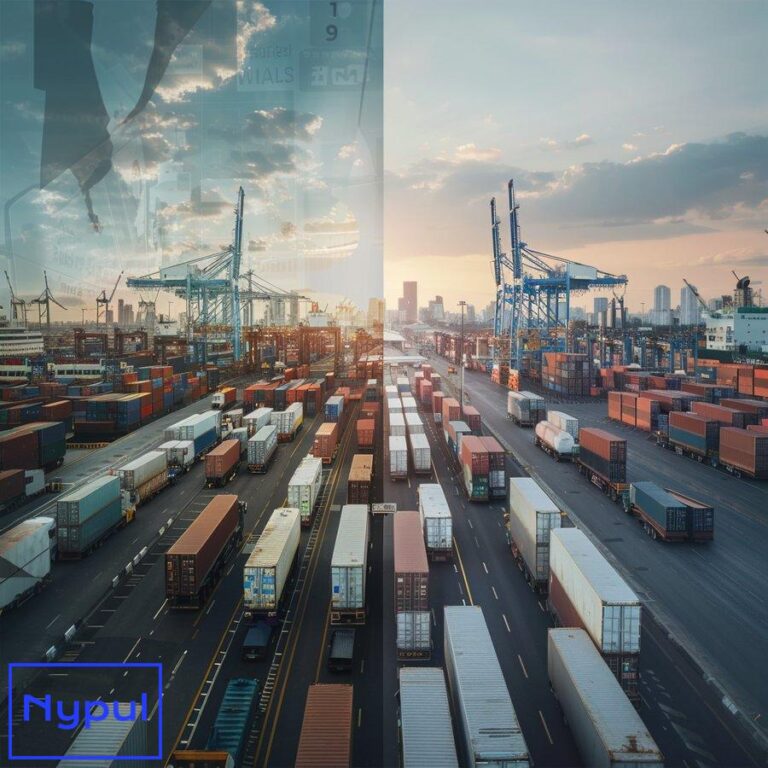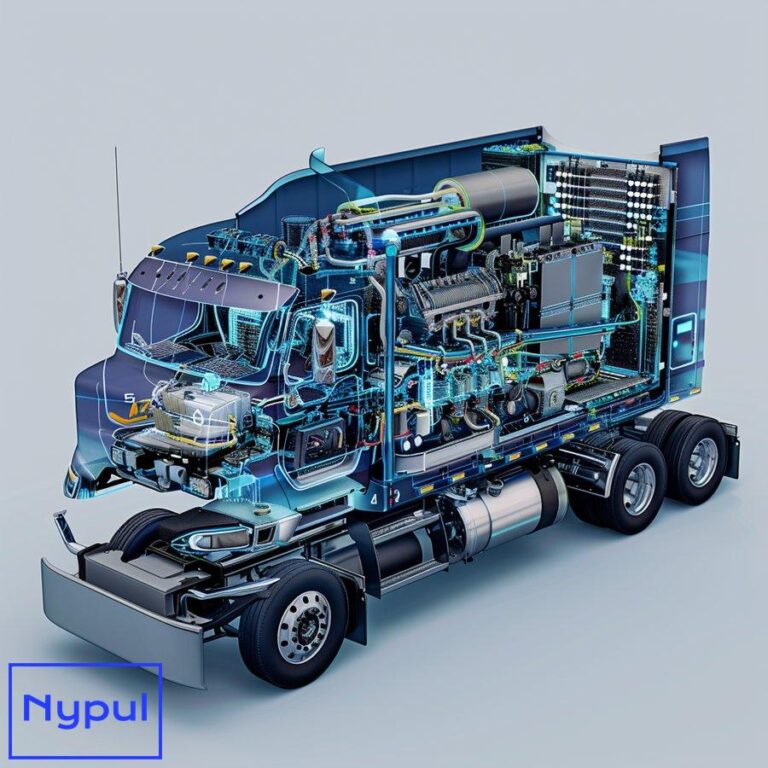What Are Intermodal Operations
What are intermodal operations and why are they important?
Intermodal operations involve the transportation of goods using multiple modes, such as trucks, trains, and ships, without handling the freight itself when changing modes. This seamless integration allows for efficient and cost-effective movement of cargo over long distances.
Intermodal transportation plays a crucial role in global supply chains by:
Reducing Costs
By leveraging the strengths of each mode, intermodal transport minimizes overall shipping expenses. Rail and sea transport are more fuel-efficient and cost-effective for long hauls, while trucks provide flexibility for short-distance pickups and deliveries.
Enhancing Efficiency
Intermodal operations streamline the shipping process by eliminating the need for manual cargo handling during mode transfers. Standardized containers enable quick and easy transfer between trucks, trains, and ships, reducing transit times and increasing supply chain efficiency.
Improving Sustainability
Intermodal transportation reduces the environmental impact of shipping by optimizing fuel consumption and minimizing greenhouse gas emissions. By shifting a portion of the journey to more eco-friendly modes like rail or sea, companies can significantly reduce their carbon footprint.
Expanding Market Reach
Intermodal networks connect businesses to a wider range of markets, both domestically and internationally. By combining multiple modes of transport, companies can access remote locations and tap into new customer bases that may not be feasible with a single mode.
Intermodal operations are essential for businesses looking to optimize their supply chains, reduce costs, and improve their environmental sustainability. As global trade continues to grow, the importance of efficient and reliable intermodal transportation will only increase.
How do intermodal operations work in practice?
Intermodal operations involve a coordinated process of transferring goods between different modes of transport. Here’s a step-by-step overview of how intermodal transportation works in practice:

1. Pickup and Loading
The process begins with a truck picking up the cargo from the shipper’s location. The goods are loaded into an intermodal container, which is designed to be easily transferred between modes.
2. Truck Transport to Intermodal Terminal
The truck transports the loaded container to an intermodal terminal, such as a rail yard or port. This short-haul transport, known as drayage, is a critical link in the intermodal chain.
3. Transfer to Rail or Ship
At the intermodal terminal, the container is transferred from the truck to a train or ship. Specialized equipment, such as cranes or forklifts, is used to efficiently move the container between modes.
4. Long-haul Transport
The train or ship carries the container over long distances to the destination intermodal terminal. Rail transport is often used for inland routes, while ships are used for international or coastal shipping.
5. Transfer to Truck
Upon arrival at the destination intermodal terminal, the container is transferred back onto a truck for the final leg of the journey.
6. Delivery to Consignee
The truck transports the container to the consignee’s location, where it is unloaded, and the goods are delivered to the recipient.
Throughout the process, advanced technologies such as GPS tracking, electronic data interchange (EDI), and transportation management systems (TMS) are used to monitor the cargo, streamline communication between stakeholders, and optimize route planning.
| Intermodal Operation Step | Description |
|---|---|
| Pickup and Loading | Cargo is loaded into an intermodal container at the shipper’s location |
| Truck Transport to Terminal | The loaded container is transported by truck to an intermodal terminal |
| Transfer to Rail or Ship | The container is transferred to a train or ship at the intermodal terminal |
| Long-haul Transport | The train or ship carries the container over long distances to the destination terminal |
| Transfer to Truck | The container is transferred back onto a truck at the destination terminal |
| Delivery to Consignee | The truck delivers the container to the consignee’s location for unloading |
By seamlessly integrating multiple modes of transport, intermodal operations enable the efficient and cost-effective movement of goods across vast distances, making it a crucial component of modern supply chain management.
Who are the key players in intermodal transportation?


Intermodal transportation involves a complex network of stakeholders working together to ensure the smooth flow of goods. The key players in intermodal operations include:
Shippers
Shippers are the companies or individuals who own the goods being transported. They initiate the intermodal shipping process by contracting with carriers and logistics providers to move their cargo from origin to destination.
Carriers
Carriers are the transportation companies that physically move the goods using various modes of transport. They include:
- Trucking companies for short-haul drayage and final-mile delivery
- Rail operators for long-distance inland transport
- Shipping lines for international and coastal shipping
Intermodal Marketing Companies (IMCs)
IMCs are intermediaries that specialize in arranging intermodal transportation services. They act as a single point of contact for shippers, coordinating with multiple carriers to provide door-to-door intermodal solutions.
Intermodal Terminal Operators
Terminal operators manage the facilities where intermodal transfers take place, such as rail yards and ports. They are responsible for the efficient loading, unloading, and storage of containers, as well as the coordination of terminal operations.
Freight Forwarders
Freight forwarders are logistics experts who arrange the end-to-end transportation of goods on behalf of shippers. They handle the booking of cargo space, preparation of documentation, and coordination of intermodal transfers.
Equipment Providers
Equipment providers supply the necessary hardware for intermodal operations, such as containers, chassis, and specialized handling equipment. They play a crucial role in ensuring the availability and maintenance of intermodal assets.
Government Agencies
Government agencies, such as customs authorities and transportation departments, regulate and oversee intermodal operations. They enforce safety standards, security regulations, and trade compliance requirements.
| Key Player | Role |
|---|---|
| Shippers | Own the goods being transported and initiate the intermodal shipping process |
| Carriers | Physically move the goods using various modes of transport (truck, rail, ship) |
| IMCs | Arrange intermodal transportation services and act as intermediaries for shippers |
| Terminal Operators | Manage facilities where intermodal transfers take place (rail yards, ports) |
| Freight Forwarders | Arrange end-to-end transportation of goods on behalf of shippers |
| Equipment Providers | Supply necessary hardware for intermodal operations (containers, chassis, handling equipment) |
| Government Agencies | Regulate and oversee intermodal operations, enforcing safety, security, and trade compliance |
The success of intermodal transportation relies on the close collaboration and coordination among these key players. By working together, they ensure that goods are transported efficiently, safely, and cost-effectively across multiple modes and geographies.
What are the main modes of transport used in intermodal operations?
Intermodal operations leverage a combination of transport modes to achieve the most efficient and cost-effective movement of goods. The main modes of transport used in intermodal operations are:
Trucking
Trucks are the most flexible and versatile mode of transport in intermodal operations. They are used for:
- Drayage: The short-haul transport of containers between intermodal terminals and shippers’ or consignees’ locations.
- Final-mile delivery: The last leg of the intermodal journey, delivering the goods to the end customer.
Trucks provide door-to-door service, connecting the other modes of transport and ensuring seamless intermodal transfers.
Rail
Rail is a key component of intermodal transportation, offering cost-effective and environmentally friendly long-haul transport. Trains carry large numbers of containers over long distances, taking advantage of fuel efficiency and reduced traffic congestion compared to road transport.
Intermodal rail services include:
- Container-on-flatcar (COFC): Containers are loaded onto flatcars for rail transport.
- Trailer-on-flatcar (TOFC): Entire truck trailers, with or without the tractor unit, are loaded onto flatcars.
Rail transport forms the backbone of many intermodal networks, connecting ports, cities, and industrial centers.
Ocean Shipping
Ocean shipping is essential for international intermodal operations, enabling the movement of goods across continents. Containerized cargo is loaded onto ships at ports and transported to destination ports, where it is transferred to other modes for inland transport.
Ocean shipping offers:
- Cost-effectiveness for long-distance transport
- Ability to carry large volumes of cargo
- Reduced environmental impact compared to air freight
Inland Waterways
Inland waterways, such as rivers and canals, provide an additional mode of transport for intermodal operations. Barges and vessels carry containers along these waterways, offering a cost-effective and environmentally friendly alternative to road and rail transport.
Air Freight
While not as common as the other modes, air freight can be used in intermodal operations for time-sensitive or high-value goods. Containers are loaded onto aircraft and flown to destination airports, where they are transferred to trucks for final delivery.
| Mode of Transport | Characteristics | Advantages |
|---|---|---|
| Trucking | Flexible, versatile, door-to-door service | Connects other modes, enables seamless transfers |
| Rail | Cost-effective, eco-friendly, long-haul transport | Fuel-efficient, reduces road congestion |
| Ocean Shipping | International transport, carries large volumes | Cost-effective for long distances, reduced environmental impact |
| Inland Waterways | Cost-effective, eco-friendly alternative to road/rail | Utilizes rivers and canals for transport |
| Air Freight | Fast, used for time-sensitive or high-value goods | Rapid transport, suitable for urgent shipments |
By combining these modes of transport, intermodal operations can optimize supply chain efficiency, reduce costs, and minimize environmental impact. The choice of transport modes depends on factors such as distance, urgency, cargo type, and infrastructure availability.
How do technologies enhance intermodal efficiency?
Technology plays a vital role in enhancing the efficiency and visibility of intermodal operations. Advanced technologies streamline processes, improve communication, and provide real-time data for better decision-making. Here are some key technologies that enhance intermodal efficiency:
![]()
Transportation Management Systems (TMS)
TMS software automates and optimizes the planning, execution, and monitoring of intermodal shipments. It enables:

- Route optimization: Identifying the most efficient intermodal routes based on cost, time, and capacity constraints.
- Carrier selection: Choosing the best carriers for each leg of the intermodal journey based on performance metrics and rates.
- Shipment tracking: Providing real-time visibility of cargo movement across multiple modes.
TMS helps intermodal operators make data-driven decisions, reduce manual processes, and improve overall operational efficiency.
Internet of Things (IoT)
IoT devices, such as sensors and GPS trackers, enable real-time monitoring of intermodal assets and cargo. They provide:
- Location tracking: Real-time visibility of container and vehicle locations, enabling better route planning and exception management.
- Condition monitoring: Monitoring of cargo temperature, humidity, and shock levels to ensure product integrity.
- Asset utilization: Tracking the usage and availability of containers, chassis, and other intermodal equipment for optimal asset management.
IoT technology enhances intermodal visibility, improves asset utilization, and enables proactive decision-making.
Blockchain
Blockchain technology provides a secure, decentralized platform for storing and sharing intermodal data. It offers:
- Immutable record-keeping: Creating a tamper-proof ledger of intermodal transactions and documentation.
- Smart contracts: Automating the execution of intermodal contracts and payments based on predefined conditions.
- Improved trust: Enhancing trust and transparency among intermodal stakeholders by providing a single source of truth.
Blockchain streamlines intermodal processes, reduces paperwork, and improves data security and integrity.
Artificial Intelligence (AI) and Machine Learning (ML)
AI and ML algorithms analyze vast amounts of intermodal data to identify patterns, predict outcomes, and optimize operations. They enable:
- Predictive maintenance: Forecasting equipment failures and scheduling preventive maintenance to minimize downtime.
- Demand forecasting: Predicting future intermodal shipping volumes to optimize capacity planning and resource allocation.
- Intelligent scheduling: Optimizing the scheduling of intermodal transfers and terminal operations based on real-time data and constraints.
AI and ML help intermodal operators make proactive, data-driven decisions and improve operational efficiency.
| Technology | Benefits |
|---|---|
| TMS | Automates planning, execution, and monitoring; enables route optimization, carrier selection, and shipment tracking |
| IoT | Provides real-time monitoring of assets and cargo; improves visibility, asset utilization, and decision-making |
| Blockchain | Offers secure, decentralized data sharing; creates immutable records, enables smart contracts, and enhances trust |
| AI and ML | Analyze data to identify patterns, predict outcomes, and optimize operations; enable predictive maintenance, demand forecasting, and intelligent scheduling |
By leveraging these technologies, intermodal operators can significantly enhance efficiency, visibility, and decision-making. The integration of technology in intermodal operations is crucial for staying competitive in an increasingly complex and dynamic supply chain landscape.
What are the benefits and challenges of intermodal transportation?


Intermodal transportation offers numerous benefits to shippers and supply chain stakeholders, but it also comes with its own set of challenges. Understanding these benefits and challenges is crucial for making informed decisions about incorporating intermodal operations into a supply chain strategy.
Benefits of Intermodal Transportation
Cost Savings
Intermodal transportation can significantly reduce shipping costs compared to single-mode transport. By leveraging the cost-effectiveness of rail and sea transport for long-haul distances, shippers can minimize overall transportation expenses.
Increased Efficiency
Intermodal operations streamline the shipping process by reducing cargo handling and minimizing transit times. The use of standardized containers enables quick and easy transfers between modes, improving supply chain efficiency.
Environmental Sustainability
Intermodal transportation is more environmentally friendly than single-mode transport, particularly road transport. By shifting a portion of the journey to rail or sea, intermodal operations reduce greenhouse gas emissions and contribute to a lower carbon footprint.
Flexibility and Scalability
Intermodal networks offer shippers the flexibility to choose the most suitable combination of modes based on their specific requirements. This flexibility allows for easy scaling of operations to accommodate fluctuations in demand or changes in supply chain needs.
Improved Safety and Security
Intermodal transportation reduces the risk of cargo damage and loss by minimizing handling during mode transfers. The use of secure intermodal facilities and advanced tracking technologies also enhances the safety and security of shipments.
Challenges of Intermodal Transportation
Infrastructure Constraints
Intermodal operations rely on the availability and capacity of transportation infrastructure, such as rail networks, ports, and intermodal terminals. Infrastructure constraints, such as congestion or lack of connectivity, can hinder the efficiency of intermodal transportation.
Coordination and Communication
Intermodal transportation involves multiple stakeholders, including shippers, carriers, and terminal operators. Effective coordination and communication among these parties are essential for smooth operations, but can be challenging due to the complexity of the intermodal network.
Equipment Availability
The availability of intermodal equipment, such as containers and chassis, can impact the efficiency of operations. Shortages or imbalances in equipment supply can lead to delays and increased costs.
Regulatory Compliance
Intermodal transportation is subject to various regulations, such as customs requirements, safety standards, and environmental regulations. Ensuring compliance with these regulations across multiple modes and jurisdictions can be complex and time-consuming.
Visibility and Tracking
Maintaining end-to-end visibility of cargo movement across multiple modes can be challenging in intermodal operations. Inadequate tracking capabilities can lead to delays, lost shipments, and dissatisfied customers.
| Benefits | Challenges |
|---|---|
| Cost savings | Infrastructure constraints |
| Increased efficiency | Coordination and communication |
| Environmental sustainability | Equipment availability |
| Flexibility and scalability | Regulatory compliance |
| Improved safety and security | Visibility and tracking |
Despite the challenges, the benefits of intermodal transportation often outweigh the drawbacks for many shippers. By carefully planning and executing intermodal strategies, and leveraging advanced technologies to mitigate challenges, companies can reap the rewards of this efficient and sustainable mode of transportation.
How does intermodal transport compare to other shipping methods?
When deciding on a shipping## How does intermodal transport compare to other shipping methods?
Intermodal transport stands out among various shipping methods due to its unique combination of efficiency, cost-effectiveness, and environmental sustainability. To provide a comprehensive comparison, it is essential to examine intermodal transport alongside other common shipping methods: road transport, rail transport, air freight, and ocean freight.
Intermodal Transport vs. Road Transport
Intermodal transport utilizes multiple modes, primarily combining truck and rail or ocean shipping. While road transport offers flexibility and door-to-door service, it is often subject to traffic congestion, higher fuel costs, and increased environmental impact. Intermodal transport mitigates these issues by using rail or sea for long distances, which are generally more fuel-efficient.
- Advantages of Intermodal Transport:
- Cost savings on long-haul routes.
- Reduced carbon footprint due to the use of rail or sea.
-
Enhanced efficiency through minimized handling.
-
Disadvantages of Intermodal Transport:
- Longer transit times compared to direct road transport for short distances.
- Dependence on the availability of intermodal terminals.
Intermodal Transport vs. Rail Transport
Intermodal transport incorporates rail as one of its primary modes, but it adds the flexibility of truck transport for drayage and final delivery. Rail transport alone is efficient for bulk shipments over long distances but lacks the door-to-door service provided by intermodal solutions.
- Advantages of Intermodal Transport:
- Greater flexibility in routing and service options.
-
Enhanced capacity to handle diverse cargo types, including containers and trailers.
-
Disadvantages of Intermodal Transport:
- Complexity in coordination among multiple carriers.
- Potential delays during mode transfers.
Intermodal Transport vs. Air Freight
Air freight is the fastest shipping method, ideal for time-sensitive or high-value cargo. However, it is also the most expensive and has a higher environmental impact. Intermodal transport provides a balanced alternative by offering cost savings and improved sustainability for less urgent shipments.
- Advantages of Intermodal Transport:
- Lower costs for non-urgent shipments.
-
Reduced environmental impact compared to air freight.
-
Disadvantages of Intermodal Transport:
- Longer transit times compared to air freight.
- Limited capacity for certain types of cargo.
Intermodal Transport vs. Ocean Freight
Ocean freight is a vital component of international trade, providing cost-effective shipping for large volumes of goods. Intermodal transport complements ocean freight by facilitating the inland movement of cargo once it arrives at a port. The combination of both methods enhances overall supply chain efficiency.
- Advantages of Intermodal Transport:
- Seamless integration of ocean shipping with inland transport.
-
Cost savings for long-distance shipments.
-
Disadvantages of Intermodal Transport:
- Dependence on port and terminal efficiency.
- Potential delays due to customs clearance and intermodal transfers.
| Shipping Method | Advantages | Disadvantages |
|---|---|---|
| Intermodal Transport | Cost savings, reduced carbon footprint, enhanced efficiency | Longer transit times, complexity in coordination |
| Road Transport | Flexibility, door-to-door service | Traffic congestion, higher fuel costs |
| Rail Transport | Fuel-efficient for bulk shipments | Limited door-to-door service |
| Air Freight | Fastest shipping method | Most expensive, higher environmental impact |
| Ocean Freight | Cost-effective for large volumes | Dependence on port efficiency, potential delays |
Intermodal transport offers a unique blend of advantages that make it an attractive option for many shippers. By understanding how it compares to other shipping methods, businesses can make informed decisions about their logistics strategies.
Case Studies: Successful Intermodal Operations
Examining real-world examples of successful intermodal operations provides valuable insights into best practices and the benefits of this transportation method. Below are three case studies that highlight how companies have effectively implemented intermodal solutions.

Case Study 1: Walmart’s Intermodal Strategy
Walmart, one of the largest retailers in the world, has successfully integrated intermodal transportation into its supply chain. The company utilizes a network of rail and truck transport to move goods efficiently from distribution centers to stores across the United States.
- Implementation:
- Walmart employs a dedicated fleet of intermodal containers, allowing for seamless transfers between rail and truck.
-
The company strategically locates distribution centers near rail lines to minimize drayage costs.
-
Results:
- Walmart has achieved significant cost savings by leveraging rail for long-haul transport, reducing fuel consumption, and minimizing road congestion.
- The retailer has improved its delivery times and enhanced overall supply chain efficiency.
Case Study 2: Maersk Line’s Intermodal Services
Maersk Line, a leading global shipping company, offers intermodal services that connect ocean freight with inland transportation. The company provides integrated solutions that simplify the shipping process for customers.
- Implementation:
- Maersk has established partnerships with rail operators and trucking companies to create a seamless intermodal network.
-
The company utilizes advanced tracking technologies to provide real-time visibility of shipments.
-
Results:
- Customers benefit from reduced transit times and improved reliability in their supply chains.
- Maersk has positioned itself as a one-stop solution for shippers, enhancing customer satisfaction and loyalty.
Case Study 3: Schneider National’s Intermodal Division
Schneider National, a prominent logistics provider in North America, has developed a robust intermodal division that combines rail and truck transport to optimize shipping efficiency.
- Implementation:
- Schneider operates a fleet of intermodal containers and chassis, allowing for flexible routing options.
-
The company leverages advanced analytics to optimize load planning and route selection.
-
Results:
- Schneider has reduced transportation costs for its customers while maintaining high service levels.
- The company’s intermodal services have contributed to a more sustainable supply chain by reducing greenhouse gas emissions.
These case studies illustrate the effectiveness of intermodal operations in enhancing supply chain efficiency, reducing costs, and improving sustainability. By adopting best practices from these successful implementations, other companies can leverage intermodal transportation to achieve their logistics goals.
Conclusion
Intermodal operations represent a vital component of modern logistics, offering a unique blend of efficiency, cost-effectiveness, and environmental sustainability. By integrating multiple modes of transport, businesses can optimize their supply chains and enhance their competitive advantage.
The importance of intermodal transportation will continue to grow as global trade expands and the demand for efficient logistics solutions increases. Companies that embrace intermodal operations and leverage advanced technologies will be better positioned to navigate the complexities of today’s supply chain landscape.
In summary, intermodal operations not only provide a practical solution for transporting goods across vast distances but also contribute to a more sustainable and efficient future for the logistics industry. As businesses continue to seek innovative ways to improve their supply chains, intermodal transportation will undoubtedly play a pivotal role in shaping the future of global trade.






